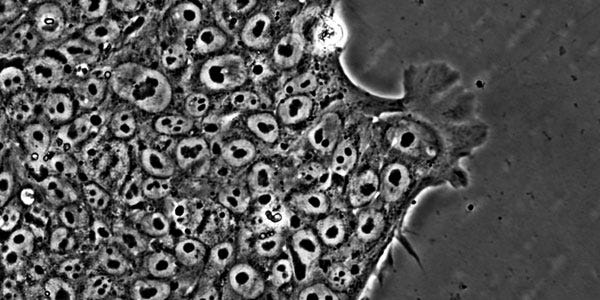Troubleshooting Guide for Human Pluripotent Stem Cell Culture
Technical tip from our dedicated team of Product and Scientific Support specialists
This Tech Tip provides potential solutions to common problems encountered when culturing human embryonic stem (ES) and induced pluripotent stem (iPS) cells. For additional protocols, tips, and tricks, visit our Methods Library for Pluripotent Stem Cell Culture.
Problem 1: Excessive differentiation (> 20%) in cultures
- Ensure that your complete cell culture medium (e.g. mTeSR™ Plus or mTeSR™1) kept at 2 - 8°C is less than 2 weeks old.
- Ensure areas of differentiation are removed prior to passaging.
- Avoid having the culture plate out of the incubator for more than 15 minutes at a time.
- Ensure that the cell aggregates generated after passaging are evenly sized.
- Ensure cultures are passaged when the majority of colonies are large, compact, and have centers that are dense compared to their edges, and are not allowed to overgrow.
- Decrease the colony density by plating fewer cell aggregates during passaging.
- Reduce incubation time with ReLeSR™ during passaging, as your cell line/culture may be more sensitive.
Problem 2: Cell aggregate size obtained with ReLeSR™ is not ideal
- If larger aggregates are obtained (i.e. mean aggregate size is > 200 μm):
- Pipette the cell aggregate mixture up and down. Avoid generating a single-cell suspension.
- Increase the incubation time by 1 - 2 minutes.
- If smaller aggregates are obtained (i.e. mean aggregate size is < 50 μm):
- Minimize the manipulation of cell aggregates after dissociation.
- Decrease the incubation time by 1 - 2 minutes.
Problem 3: Cell aggregates obtained during the passaging protocol are too large
- Increase the incubation time with Gentle Cell Dissociation Reagent.
- Increase pipetting up and down of the cell aggregates.
- Add a wash step using D-PBS (Without Ca++ and Mg++) before adding the non-enzymatic passaging reagents.
Problem 4: Differentiated cells are also detaching with the colonies when using ReLeSR™
- Decrease the incubation time with ReLeSR™ by 1 - 2 minutes.
- Decrease the incubation temperature to room temperature (15 - 25°C).
Problem 5: Colonies remain attached and/or significant scraping is required to dislodge cells
- Ensure that the passaging reagents are used as described in section 5.0 of the technical manuals Maintenance of Human Pluripotent Stem Cells in mTeSR™ Plus or Maintenance of Human Pluripotent Stem Cells in mTeSR™1.
- Increase the incubation time by 1 - 2 minutes.
Problem 6: Low attachment observed after plating
- Plate a higher number of cell aggregates initially (e.g. 2 - 3 times higher) and maintain a more densely confluent culture.
- Work quickly after cells are treated with passaging reagents (ReLeSR™ or Gentle Cell Dissociation Reagent) to minimize the duration that cell aggregates are in suspension.
- Reduce incubation time with the passaging reagents during passaging, as your cell line/culture may be more sensitive. This is particularly important if cells are passaged prior to cell multi-layering within the colony.
- Do not excessively pipette up and down to break up cell aggregates to reach the desired size. Instead, increase the incubation time with the passaging reagent by 1 - 2 minutes. This is particularly important if colonies are very dense and cell aggregates are difficult to break up.
- Ensure that non-tissue culture-treated plates are used when coating with Vitronectin XF™; ensure that tissue culture-treated plates are used when coating with Corning® Matrigel®.
Related Resources
Quality Control for Pluripotent Stem Cells
Get to know the key quality attributes of hPSC cultures, including techniques for maintaining and assessing genomic integrity, pluripotency, and morphology.
Learn More >Controlling the hPSC Culture System
Reducing stressors and undefined components in culture is critical for the maintenance of high-quality hPSCs. Explore resources on feeder-free culture and handling techniques.
Request Pricing
Thank you for your interest in this product. Please provide us with your contact information and your local representative will contact you with a customized quote. Where appropriate, they can also assist you with a(n):
Estimated delivery time for your area
Product sample or exclusive offer
In-lab demonstration




